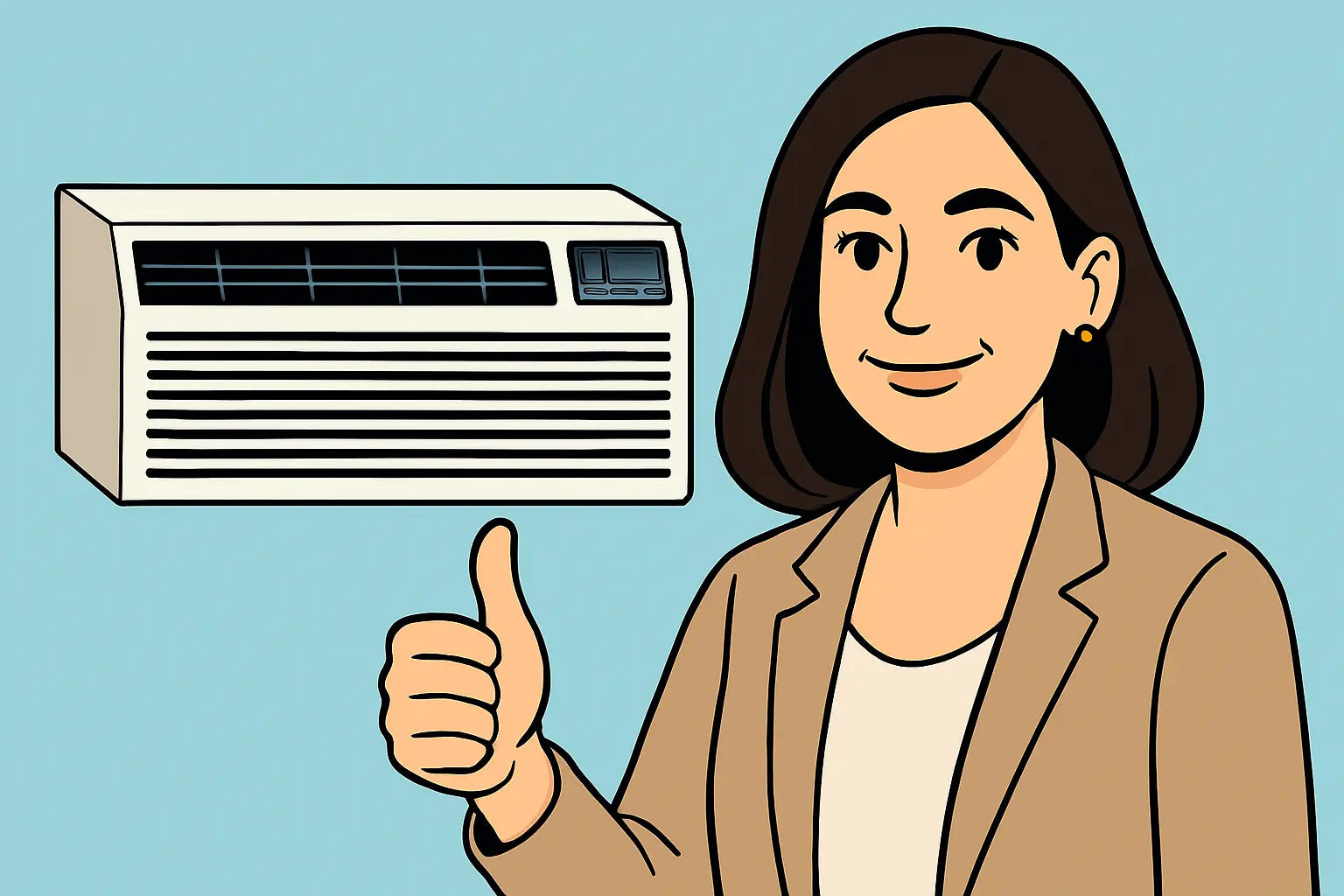Savvy Mavi Intro
Hey eco-conscious friends, Savvy Mavi here! We all want to stay comfy without trashing the planet, right? Electric heat in your Amana Distinctions 12,000 BTU PTAC unit is a solid backup for chilly days, but it does have an environmental footprint. So what’s the deal? How much energy does it use, and how can you make it greener? Let’s unpack this so you can heat smart and keep your conscience clear.
What Is Electric Heat and Why Does Your PTAC Use It?
Electric heat strips in PTAC units, like the 3.5 kW element in your Amana Distinctions, produce warmth by converting electricity directly into heat. It’s reliable, fast-responding, and perfect for backup heat when temps drop below what the AC compressor can handle.
Compared to fossil-fuel heating (natural gas, oil), electric heat produces zero on-site emissions, which sounds great! But the catch is the source of that electricity—coal, natural gas, renewables—all impact the real carbon footprint. To understand this better, the U.S. Energy Information Administration provides an excellent overview of electricity generation’s environmental effects.
The Carbon Footprint of Electric Heat
Electric heat can be cleaner or dirtier depending on your region’s electricity mix. If your power comes mainly from renewables like hydro, wind, or solar, your electric heat’s carbon footprint is low. If it’s mostly coal or gas, it’s higher.
The average U.S. household emits roughly 7.5 tons of CO2 annually from electricity use alone (EPA.gov). Electric heat is energy-intensive, so its use can spike your electricity consumption, especially in very cold climates.
Efficiency Matters: How Your Amana PTAC Helps
Luckily, your Amana Distinctions PTAC is designed to be efficient. With a 10.7 SEER rating on cooling and energy management features like compressor lockout and dual-speed fans, it avoids wasting energy. The electric heat is supplemental, kicking in only when necessary.
Want tips on maximizing your PTAC’s efficiency? The Department of Energy’s room air conditioner maintenance tips are a great place to start.
How to Reduce the Environmental Impact of Your PTAC’s Electric Heat
-
Set smart thermostats: Use programmable or smart thermostats to reduce heating when rooms are empty.
-
Regular maintenance: Clean filters and coils regularly to keep your unit running efficiently.
-
Seal leaks: Weatherstrip windows and doors to keep warm air in and cold air out.
-
Layer up: Wear cozy clothes indoors to reduce heating demand.
-
Consider supplemental heat: If electric heat costs or emissions are a concern, adding a heat pump or integrating with a renewable energy source can help.
For more about green heating options, check out Energy.gov’s guide on heating and cooling efficiency.
Savvy Mavi Outro
There you go—electric heat in your Amana PTAC is a quick, effective way to stay cozy but not without some environmental considerations. Smart use and regular upkeep can keep your energy footprint lighter and your bills friendlier.
If you’re ready to get or upgrade your Amana Distinctions 12,000 BTU PTAC with 3.5 kW electric heat, you can grab it right here at The Furnace Outlet.
Need some noise reduction tips for your Amana PTAC? Visit my guide: Silent Comfort.
Keep it green, keep it savvy.
- Mavi out 🌿⚡







